Herman Daly Has the Floor
Editor’s Note: Saturday, October 28 marks the first anniversary of Herman Daly’s passing. The father of steady-state economics, Daly was CASSE’s economist emeritus and a long-time board member. We celebrate his clear and stimulating thought with three classic essays from Best of The Daly News.
Wealth, Illth, and Net Welfare
Well-being should be counted in net terms, that is to say we should consider not only the accumulated stock of wealth but also that of “illth;” and not only the annual flow of goods but also that of “bads.” The fact that we have to stretch English usage to find words like illth and bads to name the negative consequences of production that should be subtracted from the positive consequences is indicative of our having ignored the realities for which these words are the necessary names. Bads and illth consist of things like nuclear wastes, the dead zone in the Gulf of Mexico, biodiversity loss, climate change from excess greenhouse gas emissions, depleted mines, eroded topsoil, dry wells, exhausting and dangerous labor, congestion, etc. We are indebted to John Ruskin for the word “illth,” and to an anonymous economist, perhaps Kenneth Boulding, for the word “bads.”
In the empty world of the past, these concepts and the names for them were not needed because the economy was so small relative to the containing natural world that our production did not incur any significant opportunity cost of displaced nature. We now live in a full world, full of us and our stuff, and such costs must be counted and netted out against the benefits of growth. Otherwise we might end up with extra bads outweighing extra goods and increases in illth greater than the increases in wealth. What used to be economic growth could become uneconomic growth—that is, growth in production for which marginal costs are greater than marginal benefits, growth that in reality makes us poorer, not richer. No one is against being richer. The question is, does more growth really make us richer, or has it started to make us poorer?
I suspect it is now making us poorer, at least in some high-GDP countries, and we have not recognized it. Indeed, how could we when our national accounting measures only “economic activity”? Activity is not separated into costs and benefits. Everything is added in GDP, nothing subtracted. The reason that bads and illth, inevitable joint products with goods and wealth, are not counted, even when no longer negligible in the full world, is that obviously no one wants to buy them, so there is no market for them, hence no price by which to value them. But it is worse: These bads are real and people are very willing to buy the anti-bads that protect them from the bads. For example, pollution is an unpriced, uncounted bad, but pollution cleanup is an anti-bad which is accounted as a good. Pollution cleanup has a price, and we willingly pay it up to a point and add it to GDP—but without
having subtracted the negative value of the pollution itself that made the cleanup necessary. Such asymmetric accounting hides more than it reveals.
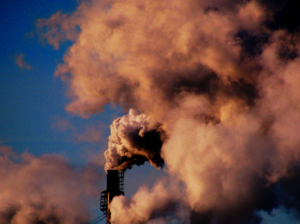
Pollution, a bad contributing to illth. (Billy Wilson)
In addition to asymmetric accounting of anti-bads, we count natural capital depletion as if it were income, further misleading ourselves. If we cut down all the trees this year, catch all the fish, burn all the oil and coal, etc., then GDP counts all that as this year’s income. But true income is defined (after the British economist Sir John Hicks) as the maximum that a community can consume this year and still produce and consume the same amount next year. In other words, it entails maximizing production while maintaining intact future capacity to produce. Nor is it only depletion of natural capital that is falsely counted as income; failure to maintain and replace depreciation of man-made capital, such as roads and bridges, has the same effect. Much of what we count in GDP is capital consumption and anti-bads.
As argued above, one reason that growth may be uneconomic is that we discover that its neglected costs are greater than we thought. Another reason is that we discover that the extra benefits of growth are less than we thought. This second reason has been emphasized in the studies of self-evaluated happiness, which show that beyond a threshold annual income of some $20-25,000, further growth does not increase happiness. Happiness, beyond this threshold, is overwhelmingly a function of the quality of our relationships in community by which our very identity is constituted, rather than the quantity of goods consumed. A relative increase in one’s income still yields extra individual happiness, but aggregate growth is powerless to increase everyone’s relative income. Growth in pursuit of relative income is like an arms race in which one party’s advance cancels that of the other. It’s like everyone standing and craning their neck in a football stadium while having no better view than if everyone had remained comfortably seated.
As aggregate growth beyond sufficiency loses its power to increase welfare, it increases its power to produce illth. This is because to maintain the same rate of growth, ever more matter and energy has to be mined and processed through the economy, resulting in more depletion, more waste, and requiring the use of ever more powerful and violent technologies to mine the ever leaner and less accessible deposits. Petroleum from an easily accessible well in East Texas costs less labor and capital to extract, and, therefore, directly adds less to GDP, than petroleum from an inaccessible well a mile under the Gulf of Mexico. The extra labor and capital spent to extract a barrel in the Gulf of Mexico is not a good or an addition to wealth—it is more like an anti-bad made necessary by the bad of depletion, the loss of a natural subsidy to the economy. In a full-employment economy, the extra labor and capital going to petroleum extraction would be taken from other sectors, so aggregate real GDP would likely fall. But the petroleum sector would increase its contribution to GDP as nature’s subsidy to it diminished. We would be tempted to regard it as more, rather than less, productive.
The next time some economist or politician tells you we must do everything we can to grow (in order to fight poverty, win wars, colonize space, cure cancer, whatever…), remind him or her that when something grows it gets bigger! Ask him how big he thinks the economy is now, relative to the ecosphere, and how big he thinks it should be. And what makes him think that growth is still causing wealth to increase faster than illth? How does he know that we have not already entered the era of uneconomic growth?
And if we have, then is not the solution to poverty to be found in sharing now, rather than in the empty promise of growth in the future?
Fitting the Name to the Named
There may well be a better name than “steady state economy,” but both the classical economists (especially John Stuart Mill) and
the past few decades of discussion, not to mention CASSE’s good work, have given considerable currency to “steady state economy” both as concept and name. Also, both the name and concept of a “steady state” are independently familiar to demographers, population biologists, and physicists. The classical economists used the term “stationary state” but meant by it exactly what we mean by steady state economy; briefly, a constant population and stock of physical wealth. We have added the condition that these stocks should be maintained constant by a low rate of throughput (of matter and energy), one that is well within the regenerative and assimilative capacities of the ecosystem. Any new name for this idea should be sufficiently better to compensate for losing the advantages of historical continuity and interdisciplinary familiarity. Also, “steady state economy”
conveys the recognition of biophysical constraints and the intention to live within them economically, which is exactly why it can’t help evoking some initial negative reaction in a growth-dominated world. There is an honesty and forthright clarity about the term “steady state economy” that should not be sacrificed to the short-term political appeal of vagueness.
A confusion arises with neoclassical growth economists’ use of the term “steady-state growth” to refer to the case where labor and capital grow at the same rate, thus maintaining a constant ratio of labor to capital, even though both absolute magnitudes are growing. This should have been called “proportional growth,” or perhaps “steady growth.” The term “steady-state growth” is inept because growth is a process, not a state, not even a state of dynamic equilibrium.
Having made my terminological preference clear, I should add that there is nothing wrong with other people using various preferred synonyms, as long as we all mean basically the same thing. Steady state, stationary state, dynamic equilibrium, microdynamic-macrostatic economy, development without growth, degrowth, post-growth economy, economy of permanence, “new” economy, “mature” economy…these are all in use already, including by me at times. I have learned that English usage evolves quite independently of me, although like others I keep trying to “improve” it for both clarity and rhetorical advantage. If some other term catches on and becomes dominant then so be it, as long as it denotes the reality we agree on. Let a thousand synonyms bloom and linguistic natural selection will go to work. Also, it is good to remind sister organizations that their favorite term, when actually defined, is usually a close synonym to steady state economy. If it is not, then we have a difference of substance rather than of terminology.
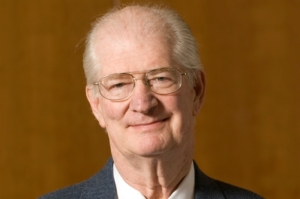
Fitting a face to a name.
Out of France now comes the “degrowth” (décroissance) movement. This arises from the recognition that the present scale of the economy is too large to be maintained in a steady state—its required throughput exceeds the regenerative and assimilative capacities of the ecosystem of which it is a part. This is almost certainly true. Nevertheless “degrowth,” just like growth, is a temporary process for reaching an optimal or at least sustainable scale that we then should strive to maintain in a steady state.
Some say it is senseless to advocate a steady state unless we first have attained, or can at least specify, the optimal level at which to remain stationary. On the contrary, it is useless to know the optimum unless we first know how to live in a steady state. Otherwise knowing the optimum level will just allow us to wave goodbye to it as we grow beyond it, or as we “degrow” below it.
Optimal level is one thing; optimal growth rate is something else. Once we have reached the optimal level then the optimal growth rate is zero. If we are below the optimal level the temporary optimal growth rate is at least known to be positive; if we are above the optimal level we at least know that the temporary growth rate should be negative. But the first order of business is to recognize the long-run necessity of the steady state and to stop positive growth. Once we have done that, then we can worry about how to “degrow” to a more sustainable level, and how fast.
There is really no conflict between the steady state economy and “degrowth” because no one advocates negative growth as a permanent process; and no one advocates trying to maintain a steady state at the unsustainable present scale of population and consumption. But many people do advocate continuing positive growth beyond the present excessive scale, and they are the ones in control and who need to be confronted by a united opposition!
Nicholas Georgescu-Roegen, adopted by the “degrowth” movement as its posthumous founder, indeed recognized that the very long-run growth rate must be negative given the entropy law and the final dissolution of the universe. But he did not advocate speeding up that cosmic result by negative growth as an economic policy, nor for that matter did he advocate a steady state economy! In fact, he speculated that the destiny of mankind might be to have a short, fiery, and exciting life rather than a long and uneventful one. He did, however, tentatively suggest a “minimal bio-economic program” that would surely reduce growth. In general, he was interested in what is possible more than in what is desirable. The question, “Given the limits of the possible, what is the most desirable policy for mankind?” was not his main focus, although he did not entirely ignore it. The closest he came to explicitly dealing with that question was in the following footnote: “Is it not true that mankind’s problem is to economize S (a stock) for as large an amount of life as possible, which implies to minimize si (a flow) for some ‘good life’” (Georgescu-Roegen 1975:368)?
In other words, should we not strive to maximize cumulative lives ever to be lived over time by depleting S (terrestrial low-entropy stocks) at an annual rate that is low, but sufficient for a “good life”? There is no point in maximizing years lived in misery, so the qualification “for a good life” is important. I have always thought that Georgescu-Roegen should have put that question in bold in the text, rather than hiding it in a footnote. True enough, eventually S will be gone, and mankind will revert to what he called “a berry-picking economy” until the sun burns out, if not driven to extinction sooner by some other event. But in the meantime, striving for a steady state at a resource use rate sufficient for a good (but not luxurious) life seems to me a worthy goal, a goal of maximizing the cumulative life satisfaction possible under limited total resource constraints. This puts at the very center of economics the questions:
• How much resource use per capita is sufficient for a good life?
• How do we ensure that everyone gets that amount?
• How large a population can be supported at that standard of consumption without sacrificing carrying capacity and future life?
Needless to say, these questions have not been central to modern economics—indeed, not even peripheral!
Georgescu-Roegen did not like the idea of “sustainability” any more than that of a steady state economy because he interpreted both to mean “ecological salvation” or perpetual life for our species on earth, which of course flies in the teeth of the entropy law. And he was right about that. So, sustainability should be understood as longevity, not eternal species-life. Clear scientific thinking about “forever” seems, interestingly, to lead to the religious model of death and resurrection, and/or new creation, not
perpetual continuation of this creation. Perpetuity in this world is just a glorified perpetual motion machine! To think about forever we must cross from science into theology. But longevity (a long and good life for both individual and species), even if it falls short of forever, or “ecological salvation,” is still a worthy goal both for scientists and theologians, not to mention economists. A steady state economy is arguably the best strategy for achieving longevity—regardless of what we call it.
Reference:
Georgescu-Roegen, N. 1975. Energy and economic myths. Southern Economic Journal 41(3):347-381.
Not Production, Not Consumption, but Transformation
Well-established words can be misleading. In economics “production” and “consumption” are such common terms that it
is easy to forget that they do not really mean what they literally say. Physically we do not produce anything; we just use energy to rearrange matter into a more useful form. Production really means transformation of what is already here. Likewise, consumption merely reflects the disarrangement of carefully structured materials by the wear and tear of use into a less useful form—another transformation, this time from useful product into worn out product and waste.
Of course one might say that we are producing and consuming “value” or “utility,” not really physical things. However, value is always added to something physical, namely resources, by labor and capital, which are also physical things ultimately made from the same low-entropy energy and materials that go into products. Nor does the service sector escape physical dimensions—services are always rendered by something or somebody. To abstract from physical dimensions and focus only on utility is to throw out the baby and pour bathwater on the diaper.
If we were to speak of a “transformation function” rather than a production function then we would naturally have to specify what is being transformed, into what, by the agency of what. Natural resource flows are transformed into flows of goods (and wastes), by the fund agents of labor and capital. A transformation function must show both the agents of transformation (funds of labor and capital that are not themselves transformed into the product but are needed to effect the transformation), and the flow of resources that are indeed physically embodied in the flow of products (and waste). This distinction between fund and flow factors immediately reveals their complementary roles (i.e., as “efficient cause” and “material cause” in Aristotelian terms). Any substitution between them is very limited.

Cook and kitchen, and don’t forget the ingredients. (Kitchen of Purpose)
You cannot bake the same cake with half the flour, eggs, etc. by doubling the number of cooks and the size of the oven. One natural resource can often substitute for another, and capital can often substitute for labor or vice versa, but more labor and capital can hardly substitute for a smaller resource flow, beyond the very limited extent of sweeping up and re-using waste such as scraps, sawdust, etc. (which ought to have already been accounted for in specifying a technically efficient production function). In most textbooks the production function depicts output as a function of inputs, undifferentiated as to their fund or flow nature, and all considered fundamentally substitutable.
But if the usual production function does not distinguish fund agents of transformation from the flow of natural resources being transformed, then how does it envisage the process of converting factor inputs into product outputs? Usually by multiplying them together, as in the Cobb-Douglas and other multiplicative functions. What could be more natural linguistically than multiplying “factors” to get a “product”? But this is mathematics, not economics. There is absolutely nothing analogous to multiplication going on in what we customarily call production—there is only transformation.
Try to multiply the resource flow by labor or capital to get product outflow and your “production function” will have immediately run afoul of the law of conservation of mass. Perhaps to escape such incongruities most production functions contain only labor and capital, omitting resources entirely. We can now bake our cake with only cook and oven; no ingredients to be transformed at all!
How did this nonsense come into economics? I suspect it represents a confusion between the production function as a theoretical analytical description of the physical process of transformation (a recipe), and a production function as a mere statistical correlation between outputs and inputs. The latter is common in macroeconomics, the former in microeconomics, although that is not a hard and fast rule. The distinction between a theoretical description and a statistical correlation is often ignored in both contexts.
The statistical approach usually includes only labor and capital as factor inputs, and then discovers that these two factors “explain” only 60% of the historical change in output, leaving a 40% residual to be explained by “something else.” No problem, say the growth economists: That large residual is “obviously” a measure of technological progress. However, the statistical residual is in fact a measure of everything that is not capital and labor—including specifically the quantity and quality of resources transformed. Increased resource use gets counted in the residual and attributed to technological progress. Then that same measure of technological progress is appealed to in order to demonstrate the unimportance of resources! If we thought in terms of a transformation function, rather than production ex nihilo, it would be hard to make such an error.
The basic points just made were developed more rigorously forty years ago by Nicholas Georgescu-Roegen in his fund-flow critique of the neoclassical production function. Neoclassical growth economists have never answered his critique. Why bring it up again, and what is the relevance to steady-state economics?
It is worth raising the issue again precisely because it has never been answered. What kind of a science is it that can get away with ignoring a fundamental critique for forty years? It is relevant to steady-state economics because it views production as physical transformation subject to biophysical limits and the laws of thermodynamics. Also it shows that the force of resource scarcity is in the nature of a limiting factor, and not so easy to escape by substitution of capital for resources, as often claimed by neoclassical growth economists.
Herman Daly was CASSE’s Economist Emeritus and past World Bank Senior Economist.

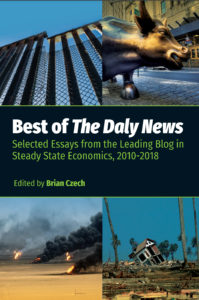

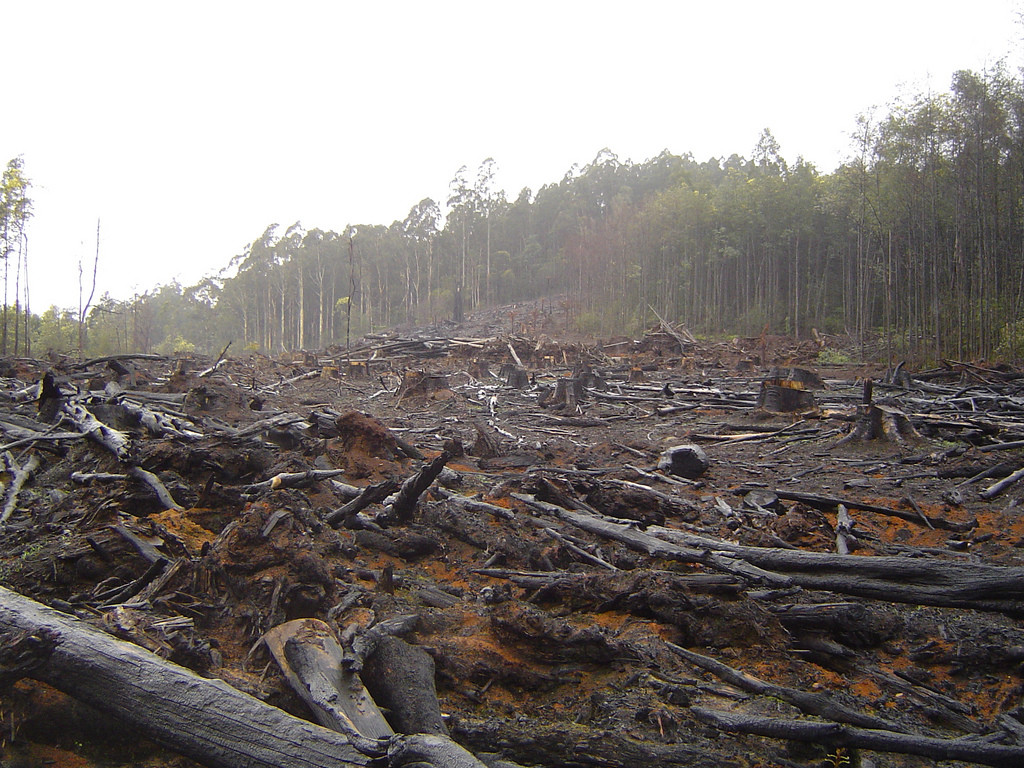
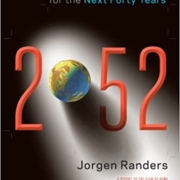

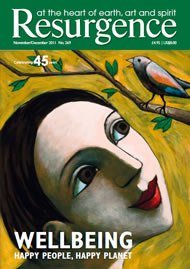


Such grand wisdom, and awards and accolades as well, and yet Herman Daly seems to have been ignored by major media..I googled “CNN Herman Daly” and apparently he was never interviewed by CNN even if that same cable network regularly interviews “economists”. I did find one interview on CNN of an economist who called Daly his mentor, and covered some of the issues raised in the above article. Most economists are aware of the flaws and outright inaccuracies of GDP, but they either lack the courage to risk losing their funding or lack the ethics to confront the subject.
What clear and beautiful writing! What were the original dates of each of these essays?